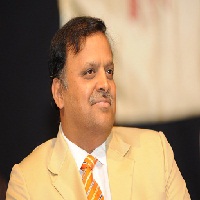Topic
Avinash Dharmadhikari On वर्तमान कालीन संदर्भात सावरकर In Conversation with Tushar Mulay
On 28th 05.00 pm - 05:40 pm
He was an atheist who was always proud of his Hindu identity, which he regarded as political and cultural. On January 6, 1924, Savarkar was released from prison and played a key part in forming the 'Ratnagiri Hindu Sabha.' The goal of this organisation was to conserve Hindus' social and cultural history.
Veer Savarkar, the president of the 'Hindu Mahasabha,' urged Hindus to help the British during WWII. Veer Savarkar was elected president of the Hindu Mahasabha in 1937. On the other hand, Muhammad Ali Jinnah declared Congress rule "Hindu Raj," exacerbating the already simmering tensions between Hindus and Muslims.
On the other side, we cannot overlook that Veer Savarkar was a vocal opponent of the Indian National Congress (INC) and Mahatma Gandhi. He opposed the 'Quit India Movement and later protested to the Indian National Congress's division support. He proposed that two nationalities coexist in a single country.
During his time in prison, he published the pamphlet Hindutva: Who is a Hindu?' Supporters of Savarkar released this. The pamphlet impacted several Hindus by describing Hindus as patriotic and proud citizens of 'Bharatvarsha' (India). He also claimed that Jainism, Buddhism, Sikhism, and Hinduism are all religions. All of these religions, he claims, may promote the building of 'Akhand Bharat' (United India)
